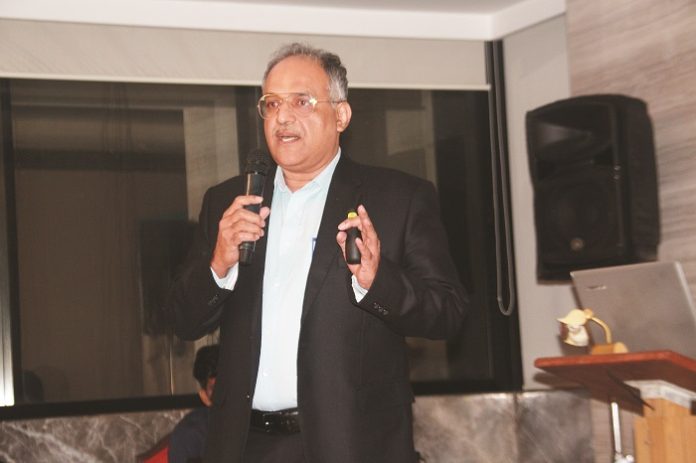On 15 January Pune-based Pratham Technologies gave a presentation on the Supersort Inspection System at Sunville Banquets, Mumbai, to the Bombay Master Printers’ Association (BMPA) Carton Forum. After showcasing Supersort – an offline carton sorting system at Pamex 2015 at Bombay Exhibition Centre, Pratham used the forum as an opportunity to display its products and features to pharma carton manufacturers.
Datta Deshpande, director, and Yogeshwar Kumawat, marketing manager of Pratham highlighted the technical features of the inspection systems including the benefits of the fluorescent illumination system over LED-based illumination, cameras mounted on top and bottom to detect punching, foiling and all types of printing processes such as color deviation, surface scratches, spots, hickeys, mottles, text deviations and a monochrome camera (bottom camera) which inspects the stability of images, presence of braille dots or embossing along with backside printing. The sorting system is also equipped with an air ejection system in order to avoid the damage of cartons due to surface friction. Desphande also announced the additional features which will be soon introduced in the system such as the right angle delivery for the rejected cartons and the vertical stacker for the inspected cartons.
First-hand account
Till date, Pratham has installed four Supersorts, two at Bhilad-based Rich Prints, one each at Mumbaibased Kalapi Printers and Shree Sales Pack. Nazim Nanjee, partner at Kalapi Printers, the first user of Supersort, which has been developed in collaboration with Germanybased Vision Experts, spoke about his experience with inspection systems at BMPA’s Carton Forum. Nanjee went to drupa 2012 with the intention to find a solution to a production bottleneck of manual carton sorting. There he shortlisted two out of four manufacturers of the inspection system on the basis of their knowledge of pharma requirements.
According to Nanjee, “The other two were experts in cigarette cartons and had limited understanding of pharma. The machines made for cigarette cartons are very stringent in their checks. They won’t let anything pass. With such a system, the rejection rates would be 30 to 40%, which is not practical.” One of the two shortlisted companies was Vision Experts, which had tied up with Pratham. “When I got to know about Pratham’s collaboration with Vision Experts, I backed Deshpande’s decision regarding the purchase of the machine.
“The expectation from the machine was that it should not detect the errors which I don’t want it to detect. When such software detects every minute variation, the rejection rates are 30 to 40%. The critical part was the length of the machine. When the machine detects an error and by the time the carton reaches the ejection it should get sufficient time to eject. If the distance is small it will not eject correctly. So after talking to many suppliers we came to the conclusion that there are two things that are important – stability of the machine and the distance between the inspection and the ejection,” according to Nanjee.
“We got about 12% rejection at that time and 88% cartons which were passed by the machine were actually error-free,” said Nanjee. According to him, the differentiating factor of Supersort as compared to its counterparts in the market is its illumination system.
Nanjee claims that they run Supersort at 45,000 to 50,000 cartons an hour without any improper ejection. “These machines are not meant to reduce wastage. They will just ensure that the material you send to your customers is the right one. You will have to work on your printing quality and get the colors right to minimize the rejection. So now we are using CIP3 to get the color right. In the next three months, we will streamline our color variation to an extent that we eliminate all the rejections that happen because of color variations,” according to Nanjee.
Today, Kalapi Printers runs Supersort at a speed of around 45,000 cartons an hour without having any improper ejection. “At the initial run, we received around 12% rejection and 88% cartons passed by the inspection machine were error-free,” said Nanjee.

















